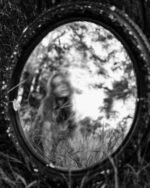Now that the Sun has returned and the days are getting warmer, the birds and butterflies will begin to appear. Take the time to research which species are native to your area, and follow these tips tp encourage them to visit you often!
Butterflies, hummingbirds, bees, insects, rabbits, squirrels and other wildlife find refuge in our backyard gardens. Some are seeking shade, and others are hunting for food, while some species are making our gardens their homes. The vibrant colors of the fluttering butterflies and the graceful dance of the hummingbirds feeding on the nectar-producing flowers adds to the beauty of a garden in bloom.
……….
Butterfly and hummingbird gardens are a popular theme to use when designing your garden or landscaping. It can literally bring your garden to life. By planting a combination of flowering plants, native grasses and leafy shrubs you can create a beautiful garden that is not only pleasing to the human eye with color and balance, but also attractive to butterflies and hummingbirds.
It is the process of pollination and survival that draws wildlife into your garden. Butterfly and hummingbird gardens are similar in that many of the same plants that attract butterflies also attract hummingbirds. Color, fragrance and nectar-producing blooms are the primary characteristics that attract hummingbirds and butterflies. It is also important to create a host environment for larvae and caterpillars, which later transform into butterflies. Good host plants are leafy and can provide shelter and food for the larvae and caterpillars.
Bring Butterflies To Your Garden
Butterflies are attracted to colorful, fragrant flowers that are shallow and easy to perch on. Food in the form of nectar and sometimes rotting fruit, sap and animal waste are what lure the butterflies to a plant. Nector is the primary attractor; it feeds both butterflies and hummingbirds. Color and fragrance are also important features that will draw butterflies and hummingbirds to your garden.
Hummingbirds Like Red
Hummingbirds are particularly fond of bright reds, purple, white, pink, orange and blue. Bee Balm and Cardinal Flower are two of the hummingbirds’ favorite nectar sources. These plants, however, don’t have a long bloom life, so it is important to add a variety of nectar-bearing flowers to ensure a longer feeding season.
Designing Your Garden
When designing your garden, take into consideration where you will be when viewing the wildlife that comes there. Vines and crawling plants that grow on a trellis can be placed near windows and sitting areas for viewing from indoors. Butterflies are cold blooded and enjoy sunning themselves. Select a garden area with full sun or at least 6 hours of full sun. Include some flat rocks or other light colored flat surfaces for basking. Butterflies and hummingbirds also like to be sheltered from the wind, so take this into consideration as well. Add a couple of shallow pans filled with sand and water to create a shallow puddle that can used as a water source.
Attract Birds With A Water Element
A bird bath, pond, re-circulating fountain or other water element adds dimension and activity to any garden. Birds love water in wide, shallow pools that are elevated off the ground approximately 3 feet or higher. Keep the depth at the center of the bath to a maximum of three inches, and shallower at the edges when possible.
A simple and inexpensive idea is to use a plastic or metal garbage can lid. You can elevate the lid on a small table or ledge, or prop it up on a tree stump. You can place a few large rocks in the center to hold the lid in place and to serve as a perch for the birds while bathing.
Place your birdbath in view of a window so you can enjoy the birds’ activities from inside your home. Place the bath near a hose so it is easy to fill up. If you can create moving water through the use of a fountain, drip or other type of spray mechanism your birdbath will attract more birds.
Food Source For Larvae and Caterpillars
Popular Caterpillar food plants are the passion vine and senna (Senna covesii, Senna leptocarpa or S. lindheimeriana). Pipevine (Aristolochia microphylla) and milkweed varieties including common milkweed (A. syriaca), pine-leaf (Asclepias linaria), narrowleaf (A. subulata), and butterfly weed (A. tuberosa). Fern acacia Acacia angustissima (A. hirta) and native mallows like Abutilon, Herrisantia, and Sphaeralcea also make good food plants. Desert Hackberry (Celtis pallida) is another larval food plant that also attracts Empress Leilias with sap and rotting fruit. A few others to consider are Side oats grama (Bouteloua curtipendula), Bamboo Muhly (Muhlenbergia dumosa) and green spangletop (Leptochloa dubia).



